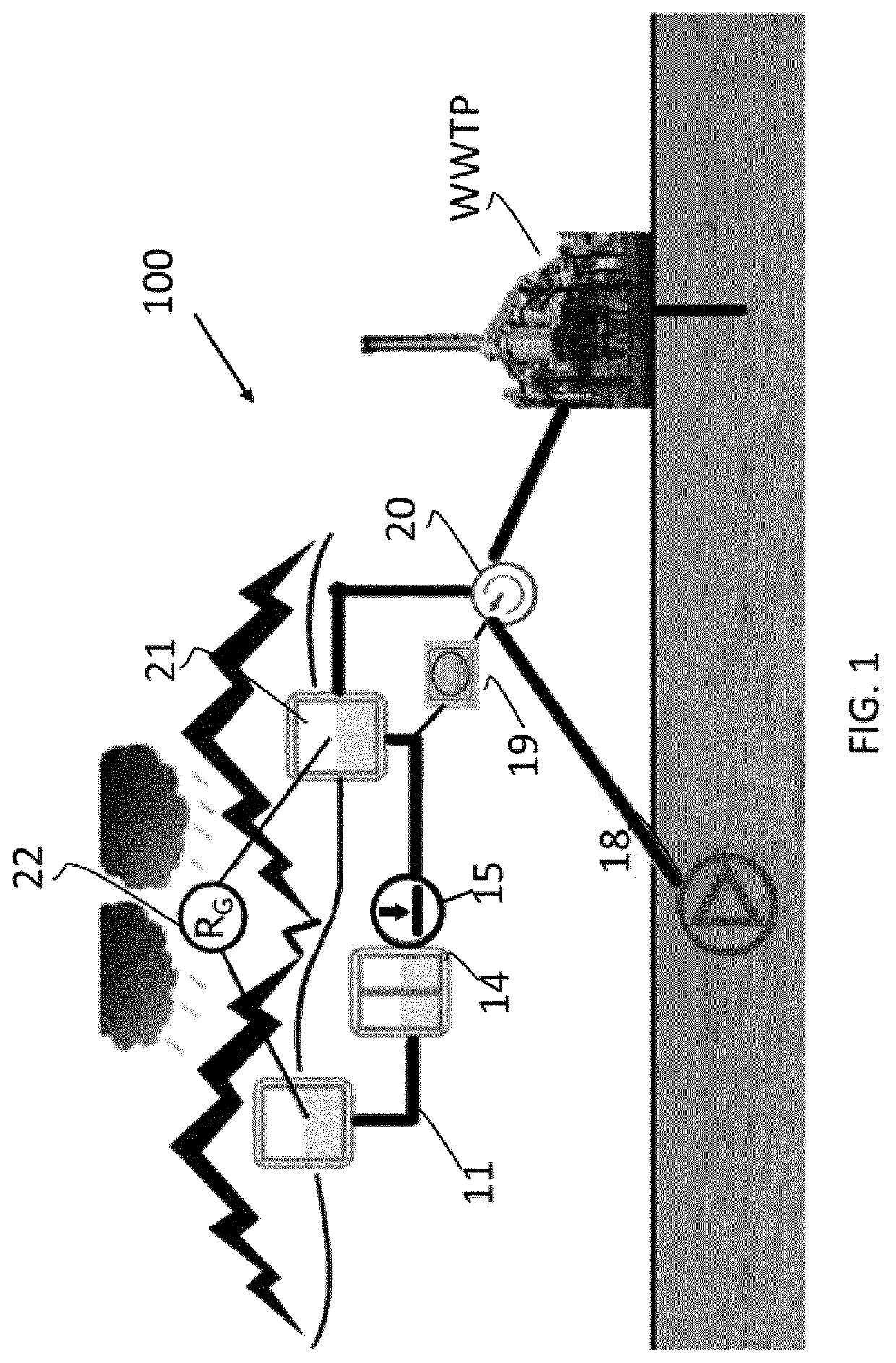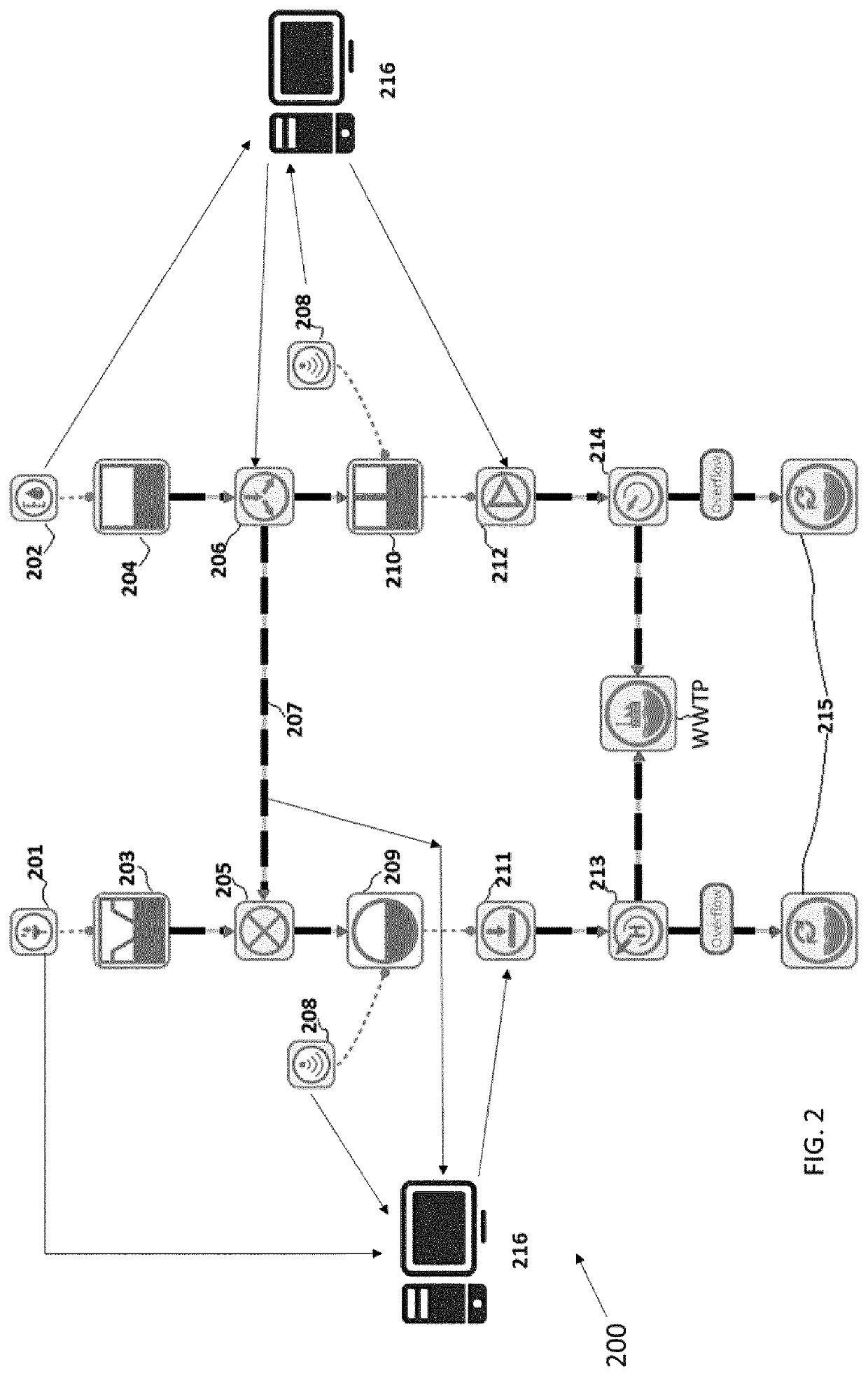Method for generating control signals adapted to be sent to actuators in a water drainage network
a technology of water drainage network and actuator, which is applied in the direction of program control, electric controller, instruments, etc., can solve the problems of sewer overflow, flooding and untreated water discharge to the receiving environment, and the inability to meet the needs of the receiving environment, so as to maximize the volume of water
- Summary
- Abstract
- Description
- Claims
- Application Information
AI Technical Summary
Benefits of technology
Problems solved by technology
Method used
Image
Examples
Embodiment Construction
[0069]In this specification, the invention will be described by way of examples related to generation of control signals adapted to be sent to actuators in a water drainage network.
Model
[0070]The dynamic models use variables which describe the state of a DN and the effect of control actions thereupon. The variables may be volume, flow, water level and rain intensity. The objective functions may be mathematical representations of the operational objectives to be met, such as minimization of CSO.
[0071]In an embodiment the method comprises receiving a maximum inflow which the WWTP is adapted to treat, and a working inflow. In this embodiment the dynamic model of the WWTP comprises data regarding a maximum inflow which the wastewater treatment plant WWTP is adapted to treat and the method comprises receiving a working inflow to generate the functions to optimize. The method has the advantage of optimal calculation depending on circumstances: for example, in case of changes in availabili...
PUM
 Login to View More
Login to View More Abstract
Description
Claims
Application Information
 Login to View More
Login to View More - R&D
- Intellectual Property
- Life Sciences
- Materials
- Tech Scout
- Unparalleled Data Quality
- Higher Quality Content
- 60% Fewer Hallucinations
Browse by: Latest US Patents, China's latest patents, Technical Efficacy Thesaurus, Application Domain, Technology Topic, Popular Technical Reports.
© 2025 PatSnap. All rights reserved.Legal|Privacy policy|Modern Slavery Act Transparency Statement|Sitemap|About US| Contact US: help@patsnap.com


